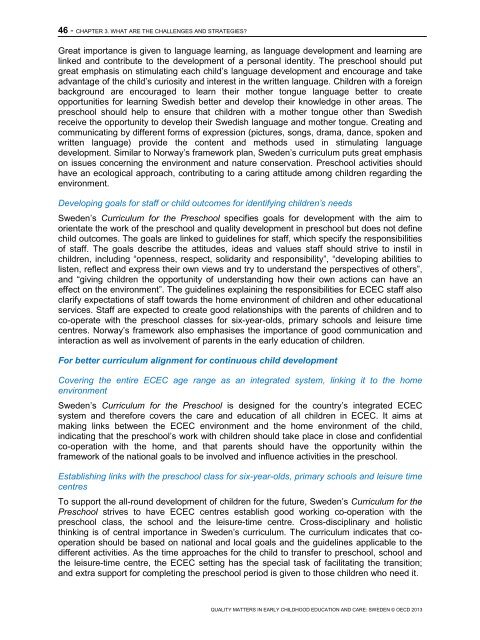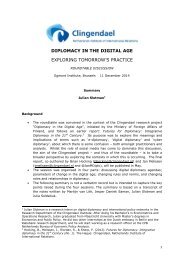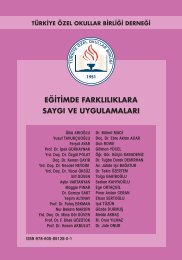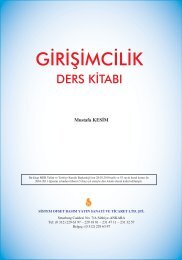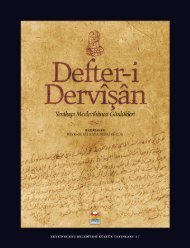SWEDEN%20policy%20profile%20-%20published%2005-02-2013
SWEDEN%20policy%20profile%20-%20published%2005-02-2013
SWEDEN%20policy%20profile%20-%20published%2005-02-2013
Create successful ePaper yourself
Turn your PDF publications into a flip-book with our unique Google optimized e-Paper software.
46 - CHAPTER 3. WHAT ARE THE CHALLENGES AND STRATEGIES?<br />
Great importance is given to language learning, as language development and learning are<br />
linked and contribute to the development of a personal identity. The preschool should put<br />
great emphasis on stimulating each child’s language development and encourage and take<br />
advantage of the child’s curiosity and interest in the written language. Children with a foreign<br />
background are encouraged to learn their mother tongue language better to create<br />
opportunities for learning Swedish better and develop their knowledge in other areas. The<br />
preschool should help to ensure that children with a mother tongue other than Swedish<br />
receive the opportunity to develop their Swedish language and mother tongue. Creating and<br />
communicating by different forms of expression (pictures, songs, drama, dance, spoken and<br />
written language) provide the content and methods used in stimulating language<br />
development. Similar to Norway’s framework plan, Sweden’s curriculum puts great emphasis<br />
on issues concerning the environment and nature conservation. Preschool activities should<br />
have an ecological approach, contributing to a caring attitude among children regarding the<br />
environment.<br />
Developing goals for staff or child outcomes for identifying children’s needs<br />
Sweden’s Curriculum for the Preschool specifies goals for development with the aim to<br />
orientate the work of the preschool and quality development in preschool but does not define<br />
child outcomes. The goals are linked to guidelines for staff, which specify the responsibilities<br />
of staff. The goals describe the attitudes, ideas and values staff should strive to instil in<br />
children, including “openness, respect, solidarity and responsibility”, “developing abilities to<br />
listen, reflect and express their own views and try to understand the perspectives of others”,<br />
and “giving children the opportunity of understanding how their own actions can have an<br />
effect on the environment”. The guidelines explaining the responsibilities for ECEC staff also<br />
clarify expectations of staff towards the home environment of children and other educational<br />
services. Staff are expected to create good relationships with the parents of children and to<br />
co-operate with the preschool classes for six-year-olds, primary schools and leisure time<br />
centres. Norway’s framework also emphasises the importance of good communication and<br />
interaction as well as involvement of parents in the early education of children.<br />
For better curriculum alignment for continuous child development<br />
Covering the entire ECEC age range as an integrated system, linking it to the home<br />
environment<br />
Sweden’s Curriculum for the Preschool is designed for the country’s integrated ECEC<br />
system and therefore covers the care and education of all children in ECEC. It aims at<br />
making links between the ECEC environment and the home environment of the child,<br />
indicating that the preschool’s work with children should take place in close and confidential<br />
co-operation with the home, and that parents should have the opportunity within the<br />
framework of the national goals to be involved and influence activities in the preschool.<br />
Establishing links with the preschool class for six-year-olds, primary schools and leisure time<br />
centres<br />
To support the all-round development of children for the future, Sweden’s Curriculum for the<br />
Preschool strives to have ECEC centres establish good working co-operation with the<br />
preschool class, the school and the leisure-time centre. Cross-disciplinary and holistic<br />
thinking is of central importance in Sweden’s curriculum. The curriculum indicates that cooperation<br />
should be based on national and local goals and the guidelines applicable to the<br />
different activities. As the time approaches for the child to transfer to preschool, school and<br />
the leisure-time centre, the ECEC setting has the special task of facilitating the transition;<br />
and extra support for completing the preschool period is given to those children who need it.<br />
QUALITY MATTERS IN EARLY CHILDHOOD EDUCATION AND CARE: SWEDEN © OECD <strong>2013</strong>


